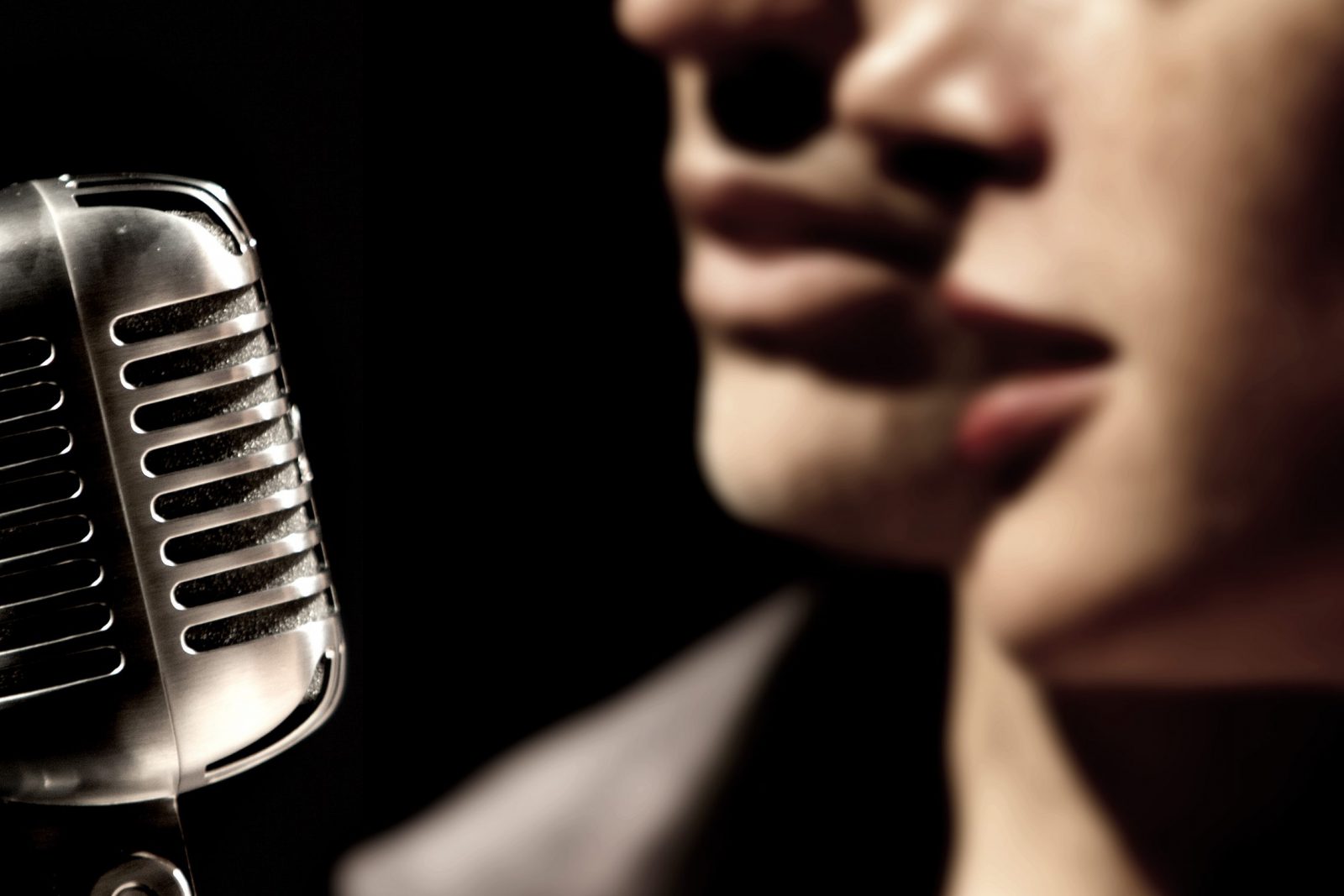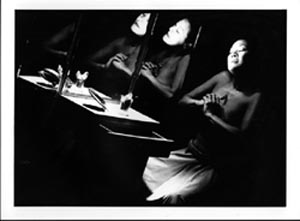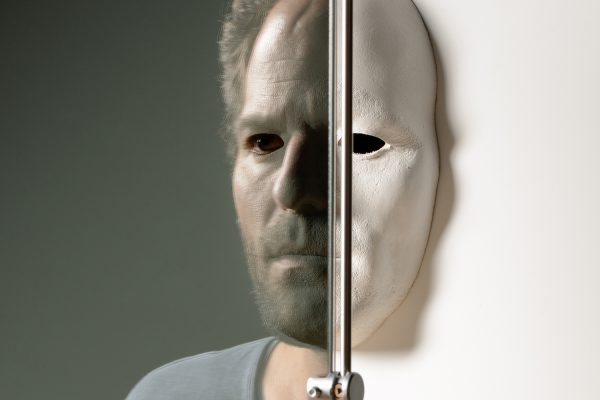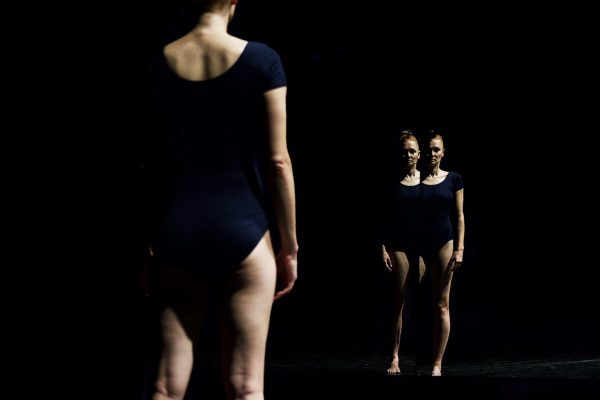For years, Katya Montaignac, the France-born, Montréal-based dramaturge, writer and instigator, has been a catalyst, a great motivating force actively bringing Montréal’s dance artists together in new and fun exploits.
Montaignac is the founder of O.D.N.i. (Objets Dansants Non identifiés) and has been a member of the 2e Porte à Gauche collective since 2006. The latter group has a knack for getting dance out of traditional theatres and reinventing strategies in unusual places (shows have taken place in strip clubs, an apartment and a discotheque). She’s initiated a series of dance history courses for dancers not linked to academic institutions, allowing them to gain insights they may never have had access to. She’s devised a playful and popular event at the Festival TransAmériques called TRIB’IMPRO, where two opposing teams composed of diverse participants from across the dance spectrum assemble for an often riotous improvisatory tournament of questions, comments, artistic news bites and movement invention, with the audience voting for its favourite bits. In essence, Montaignac seems to cultivate human immediacy and revels in the idea that connecting and communicating with people is essential.
Now she’s teamed with the scintillating mover Sophie Corriveau, an artist-in-residence at the Agora de la danse, for an event called Nous (ne) sommes (pas) tous des danseurs. The event was produced by Danse-Cité, an outfit dedicated to supporting the interprète, the more elastic and resonant understanding of the role of the dancer. It was referred to as a round table, featuring a gathering of artists, the roster a veritable who’s who, mainly drawn from Montréal’s deep pool of dance talent, including Johanna Bienaise, Sarah Bild, Lucie Boissinot, Marc Boivin, Dany Desjardins, Marie Claire Forté, Manon Levac, Marie Mougeolle, Dominique Porte, Daniel Soulières, Catherine Tardif, Andrew Turner, Vincent Warren, Jamie Wright, along with invited artist Enora Rivière, and invited writer Sylvie Massicotte.
Claudia Chan Tak, a ubiquitous force of nature on the local scene both as a performer and filmmaker, commandeered a camera recording of the three-hour event, while Lee Anholt provided technical direction, and Joël Lavoie was charged with the sound and music, sometimes putting on music selections the performers requested, other times improvising with tunes he saw fit for the mood. The performers and some of the public sat at long tables angled as a large oval with the rest of the crowd surrounding them, seated at smaller round tables. Microphones on floor stands dotted the oval.
Fittingly, Nous (ne) sommes (pas) tous des danseurs was the final show presented at the Agora de la danse space on rue Cherrier before the presenter’s anticipated fall move to the still-in-construction Wilder Espace Danse. The new venue, in the heart of the Montréal’s downtown arts hub, will house Agora, Tangente, Les Grands Ballets Canadiens de Montréal, École de danse contemporaine de Montréal and various other provincial arts agencies.
The night I attended, three themes were on the slate: one, the imposter; two, how to nourish your desire to dance; and three, body memory — what remains of a past dance. Each of the three nights had different pre-selected themes. We were told a gong would indicate a period for variations on a theme, while a chime would mark the end of a sequence. There would be a “joker” box, filled with prompts for various improvisations.
Directions for how the evening would unfold were spare and were rattled off for the audience, more for our information, as spectators were not involved in the decision-making of the proceedings. Still, there was some confusion at the table where I was seated, as it wasn’t clear how many minutes were allotted for each participant or the round, or what the gong really was about, or whether something new began after the chime chimed. Happily, these distractions soon diminished.
Some sequences were well honed, well performed and had a more profound impact over others. Levac’s incisive series of walking phrases, weaving together elements from early works by Daniel Léveillé, Paul-André Fortier, Natsu Nakajima and a few others, triggered my dance history brain. Though after her performance Levac didn’t say much about these works or her involvement in their creation, I wanted to know more about why these encrypted moments from our collective dance experience stood out for her.
Boissinot recounted a wonderful story from her student days at Les Grands Ballets’ school, recalling looking through the doors at the assembled company members rehearsing works by John Butler and Paul Taylor. She shared her adventure about getting funds to attend the American Dance Festival in Durham, North Carolina, which involved a Radio-Canada gig, a pair of heels, plumage and fishnet stockings.
Soulières spoke about his day-to-day wardrobe, which often consists of costumes from productions he’s danced in. The story about selling his Joe shoes for a Danse-Cité fundraiser elicited a gasp from the crowd. Turner, with his trademark penchant for wordplay, told the tale of his audition with Concordia University’s dance department, which drew laughs.
When Bild entered the oval, she took the title of the event and performed a rigorous, short work demonstrating how discipline can be vibrant and restraint provocative. I scribbled down much of her monologue, which Marie Claire Forté picked up with a roaming mic (apologies for missing bits, and italics indicate my observations):
I am not a dancer.
I’m not a dancer.
I can’t do what they do.
I never do the same thing twice.
I move.
Then I try to be here mostly.
Sometimes the light tells me where to be.
I like being with people.
I never had the patience for details. (Her voice heightens.)
I just want to be here.
On a Saturday.
I’m interested in existence. (She’s beginning to work the room.)
Being part of being.
To be in my body, your body.
It’s what we have in common.
I’m not a dancer.
I move.
A bit later, Montaignac suggested to Rivière that she enact a section of L’après-midi d’un faune. Apparently she had learned the Nijinsky choreography some years previous. Rivière seemed somewhat embarrassed, and initially said something like, “I was only faun number five.” Montaignac also invited Porte to come forward to dance a section from Marie Chouinard’s version, Prélude à l’après-midi d’un faune, as Porte originated the iconic role in 1994. With Debussy’s music playing, the fauns emerged side by side. Rivière tentatively recreated some of what writer Modris Eksteins refers to in his book Rites of Spring as “the walking lateral movements and poses inspired from classical bas-reliefs and vase paintings.” In Porte’s case, the audience was witness to a sublime and major moment. Though it had been years since she’d performed the work, body memory kicked in. Memories flooded in for those of us who had seen the original performance. Before our eyes, Porte painted a picture, working with the flattened profile, the breath phrasing and the primal essence of Chouinard’s bold and fantastical universe and the mystery of being, and authentically became the faun.
Ultimately some of the material presented over the course of the table ronde was thin, other bits a bit too burlesque and some was just unmemorable shtick. Working with a microphone is challenging for those unaccustomed to speaking onstage, and that dogged many of the performers. But there were other pleasures to be had, and when brief intense flashes kicked in, I wanted more.
Nous (ne) sommes (pas) tous des danseurs evolves some of the thought and method that Bild refers to in her monologue. Existence is ultimately something very personal — lived experience, lived lives; it is not being in the abstract. And for any interprète worth their salt, existence precedes essence. In those moments, stepping into performance, the foremost question is “How do I respond?” The answer resoundingly depends on how the moment is grasped.
Tagged: Choreography, Contemporary, Jamie Wright, Marc Boivin, Performance, Montréal , QC





